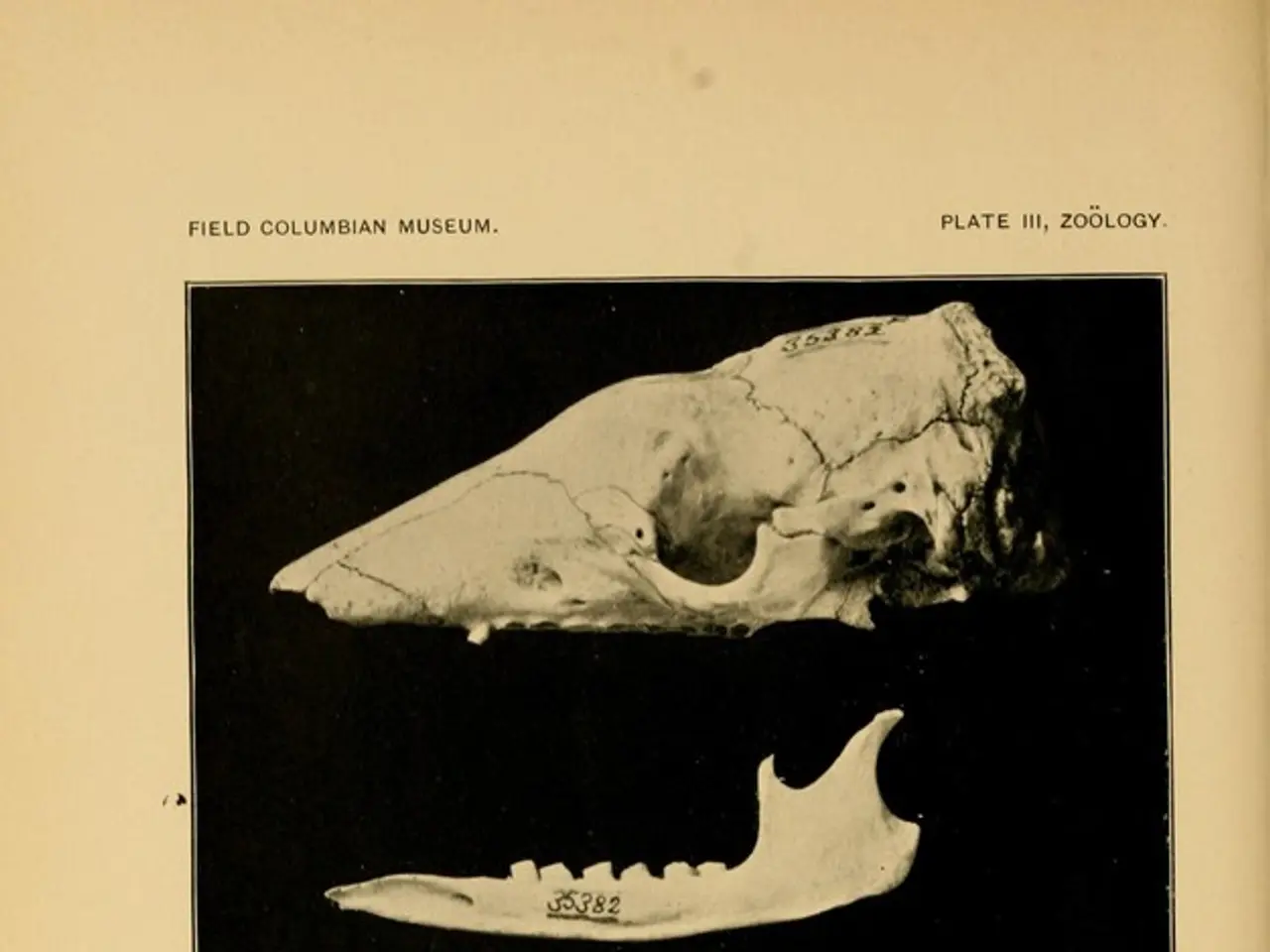Hip Inflammation due to Rheumatoid Arthritis: Recognizing Signs and Treatment Strategies
Rheumatoid arthritis (RA) is a progressive autoimmune disease that can affect the hip joint, leading to chronic inflammation, cartilage damage, bone erosion, and joint deformities. This article explores the stages of RA progression in the hip, its long-term effects, and potential treatment options.
Stages of RA Progression in the Hip
- Early stage: Inflammation causes joint pain, stiffness (especially after rest), swelling, and tenderness in the hip.
- Moderate stage: Inflammation begins damaging the cartilage and bone within the hip joint, reducing range of motion and mobility.
- Severe stage: Joint deformities develop due to continued cartilage loss and bone erosion, further restricting hip movement.
- End stage: The joint may become severely damaged and deformed, with chronic pain and potential loss of function, often necessitating assistive devices for daily activities.
RA in the hip can cause persistent symptoms during flare-ups, increasing the frequency of flares, and eventually permanent joint damage. Unlike osteoarthritis, which is mainly degenerative, RA involves systemic inflammation that can affect surrounding tissues and other organs.
Long-Term Effects of RA on the Hip
- Joint destruction: Ongoing inflammation leads to cartilage and bone erosion in the hip joint.
- Reduced mobility and function: Damage causes pain and stiffness, limiting hip motion and impairing walking or weight-bearing activities.
- Hip deformity: Structural changes can cause deformities and mechanical instability.
- Increased need for surgical intervention: Many RA patients with hip involvement may require hip replacement surgery after years of joint damage.
- Systemic complications: RA’s systemic inflammation can also contribute to other health problems such as osteoporosis, increasing fracture risk near the hip.
While RA does not have a cure and is progressive, early and aggressive treatment aims to slow joint damage and maintain hip function, potentially reducing the severity of these long-term outcomes.
Potential Treatment Options
- Medications: A doctor may recommend nonsteroidal anti-inflammatory drugs, corticosteroids, synthetic disease-modifying antirheumatic drugs (DMARDs), or biologic DMARDs to manage RA symptoms.
- Supplements: Certain supplements, such as omega-3 and curcumin, may help relieve pain and morning stiffness.
- Traditional Chinese Medicine (TCM): Guizhi-Shaoyao-Zhimu decoction (GSZD) may have antirheumatic effects and help stop inflammatory responses that result from RA. Tripterygium wilfordii Hook F (TwHF) was as effective as the DMARD methotrexate in a small study.
- Lifestyle changes: A balanced diet can aid in maintaining overall health, well-being, and a moderate weight. Daily movement, relaxation techniques, such as deep breathing and meditation, and massage can help reduce stiffness, pain, and stress.
- Assistive devices: Assistive devices, such as a cane or walker, may help people carry out their usual day-to-day activities.
- Compresses: Cold compresses can help numb the affected area and decrease inflammation to reduce more severe pain and swelling. Heated compresses or warm baths can help ease stiff, aching, or tired joints and muscles.
In summary, RA progression in the hip follows inflammation-driven stages of joint damage, leading to pain, deformity, and functional loss that may culminate in the need for hip replacement surgery if not well managed. By understanding the stages of RA progression and potential treatment options, individuals with RA can work closely with their healthcare providers to develop a comprehensive treatment plan and maintain hip function and mobility.
[1] Arthritis Foundation. (2021). Rheumatoid Arthritis in the Hip. Retrieved from https://www.arthritis.org/health-wellness/disease-management/rheumatoid-arthritis/ra-in-the-hip
[2] Mayo Clinic. (2021). Osteoporosis. Retrieved from https://www.mayoclinic.org/diseases-conditions/osteoporosis/symptoms-causes/syc-20367668
[3] Arthritis Foundation. (2021). Hip Replacement Surgery. Retrieved from https://www.arthritis.org/health-wellness/treatment/surgery/hip-replacement
[4] Arthritis Foundation. (2021). Exercises for Hip Osteoarthritis. Retrieved from https://www.arthritis.org/health-wellness/pain-management/exercise/exercises-for-hip-osteoarthritis
[5] Arthritis Foundation. (2021). Early, Aggressive Treatment for RA. Retrieved from https://www.arthritis.org/health-wellness/disease-management/rheumatoid-arthritis/early-aggressive-treatment-for-ra
- A naive individual may find it challenging to comprehend the progression of rheumatoid arthritis (RA), a chronic autoimmune disease that targets the hip joint, leading to inflammation, cartilage damage, bone erosion, and potential joint deformities.
- Science has made considerable strides in understanding the medical conditions associated with RA, including rheumatic fever, and the development of various treatments to manage symptoms and slow down disease progression.
- The long-term effects of RA on the hip can be severe, causing persistent symptoms, increased flare-ups, joint destruction, loss of mobility and function, hip deformity, and even systemic complications like osteoporosis and increased fracture risk near the hip.
- For those diagnosed with RA, treatment options include medications, such as nonsteroidal anti-inflammatory drugs, corticosteroids, synthetic disease-modifying antirheumatic drugs (DMARDs), and biologic DMARDs, as well as supplements, lifestyle changes, and assistive devices.
- In the quest for improved health and wellness, individuals with RA must work closely with their medical team to develop a comprehensive treatment plan, which may include Traditional Chinese Medicine (TCM) options like Guizhi-Shaoyao-Zhimu decoction and Tripterygium wilfordii Hook F, to help manage symptoms, slow disease progression, and maintain hip function and mobility.




